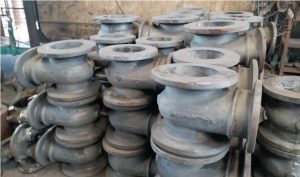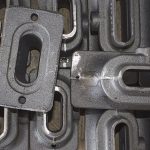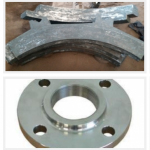What are the most common types of cast iron?
Cast iron is a versatile version of iron. This metal form contains over 2 percent carbon. It is used for different kinds of commercial as well as consumer applications. Cast iron has been used since the 5th century BC. During that period, the metal was used for making weapons and agricultural products. Due to its wide and ample usage, it is very popular among consumers and different industries. Though every kind of cast iron contains more than 2% carbon, each is unique in terms of carbon content percentage. Apart from carbon, silicon, and other alloying elements like copper, molybdenum, chromium, and titanium are also added to this ferrous alloy.
Process and types of cast iron classification
Based on the alloying elements being added, amount of heat treatment, and variation in solidification method, cast iron is categorized. These factors influence the microstructure of the alloy. Based on the application and mechanical properties, cast iron is classified as follows:
• White cast iron – If the white cast iron can be fractured, you can find white cracks throughout due to the presence of carbide impurities. Though this variation is hard, it is brittle. White cast iron has a low melting point and low silicon content as well. The carbon part of this cast iron precipitates and eventually forms large particles. These enhance the hardness of the metal. It has an abrasion resistance capacity as well. It is less expensive. And thus, white cast iron is used for several applications such as shell liners in the grinding mills, lifter bars, wear surfaces of pumps, and so on.

• Grey cast iron – This is the most versatile and preferred version of cast iron. According to a leading Grey Iron Casting Manufacturer, the alloy is preferred for its versatility, low cost, and excellent machinability. It features a graphite microstructure that is consisted of many small fractures. The fractured alloy is grey. The cast iron is named after its colour. The graphite flakes of the alloy make it machinable. They also provide grey cast iron with damping features and good lubrication properties. For such features, the alloy is highly used in different industries such as automobile, agriculture, and textile mills.
• Ductile cast iron – This is another version of ferrous alloy mostly used for engineering applications. Ductile iron is made by adding a small quantity of magnesium to molten iron. And this changes the graphite structure. This version of cast iron is flexible. It features a linear stress-strain relation. This alloy can be cast in different sizes and thicknesses.
• Malleable cast iron – This is actually white iron treated with heat for the conversion of carbide into graphite. Its properties are different from both white and grey iron. The graphite structure of the alloy is formed into irregular-shaped spheroidal particles instead of flakes. And this feature makes the alloy act as low-carbon steel. The cast iron is recognized by its blunt boundaries.
There are four types of cast iron– gray cast iron, white cast iron, ductile cast iron, and malleable cast iron. Each is unique in terms of properties and usage.
Know more: https://www.hustonindia.com/grey-iron-casting-manufacturer/




